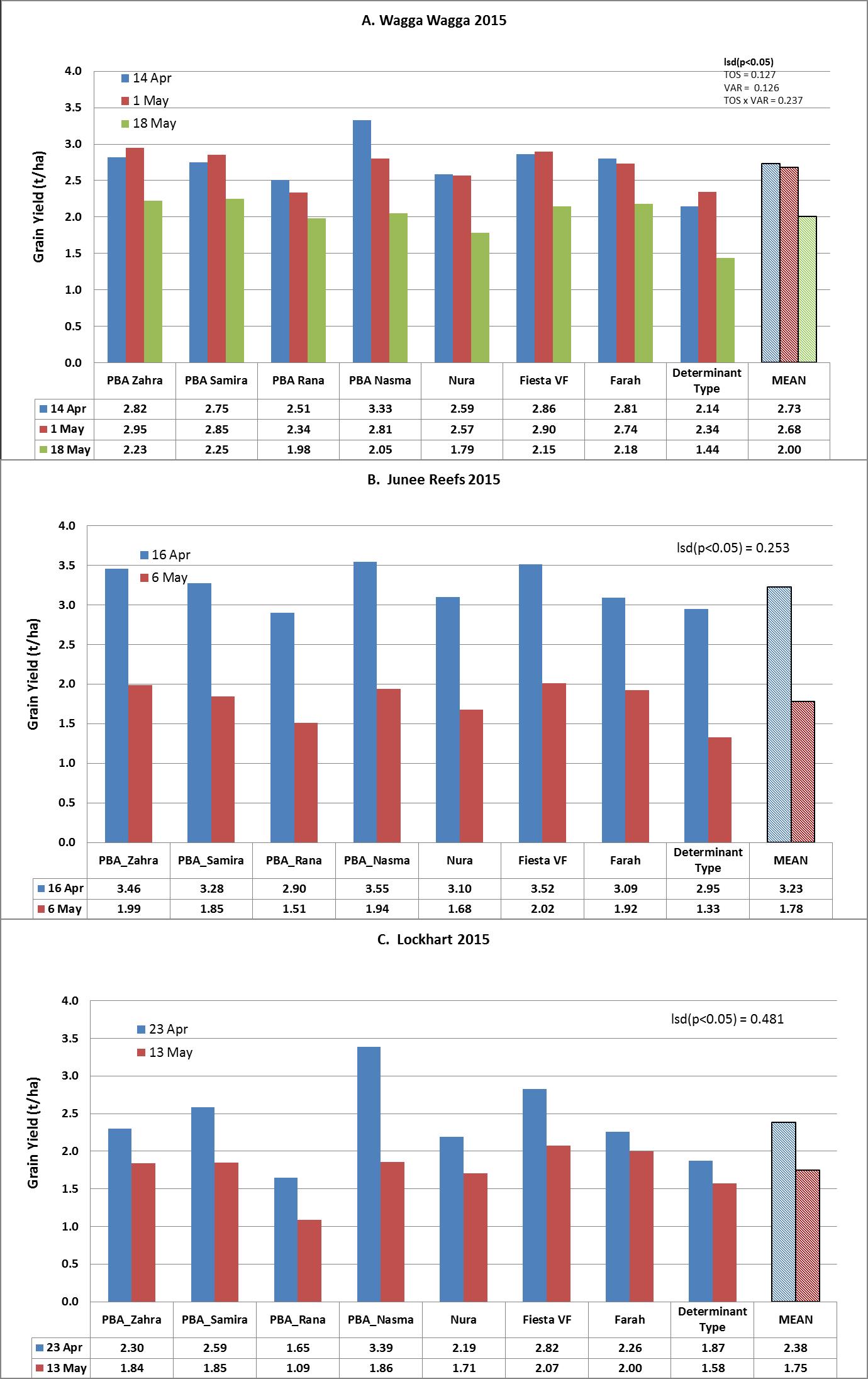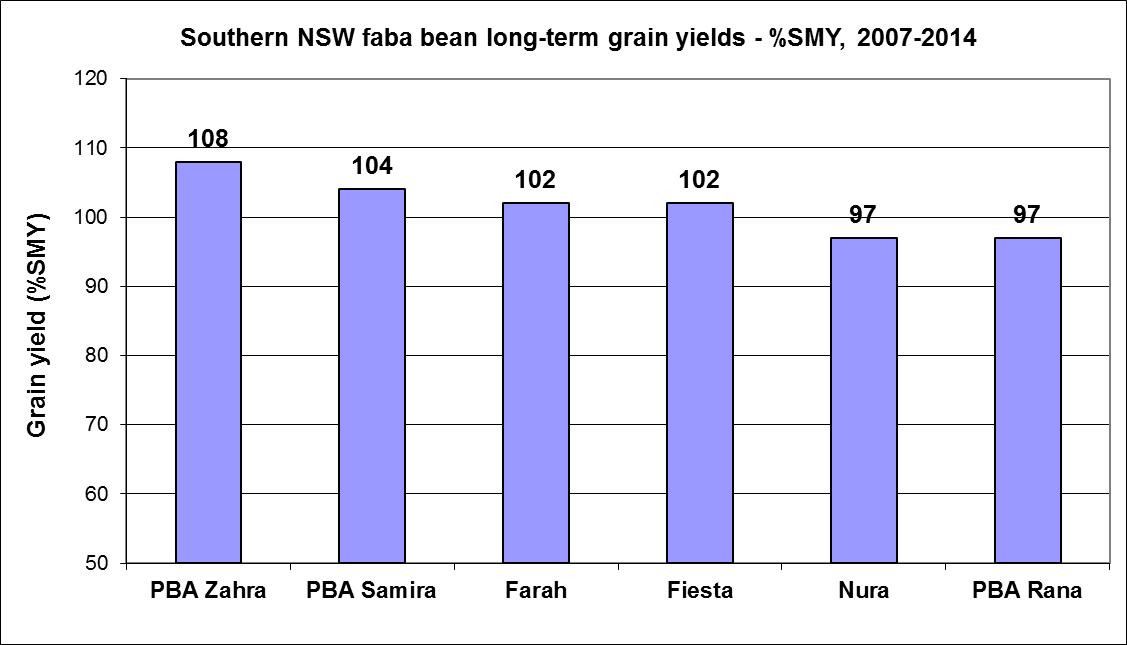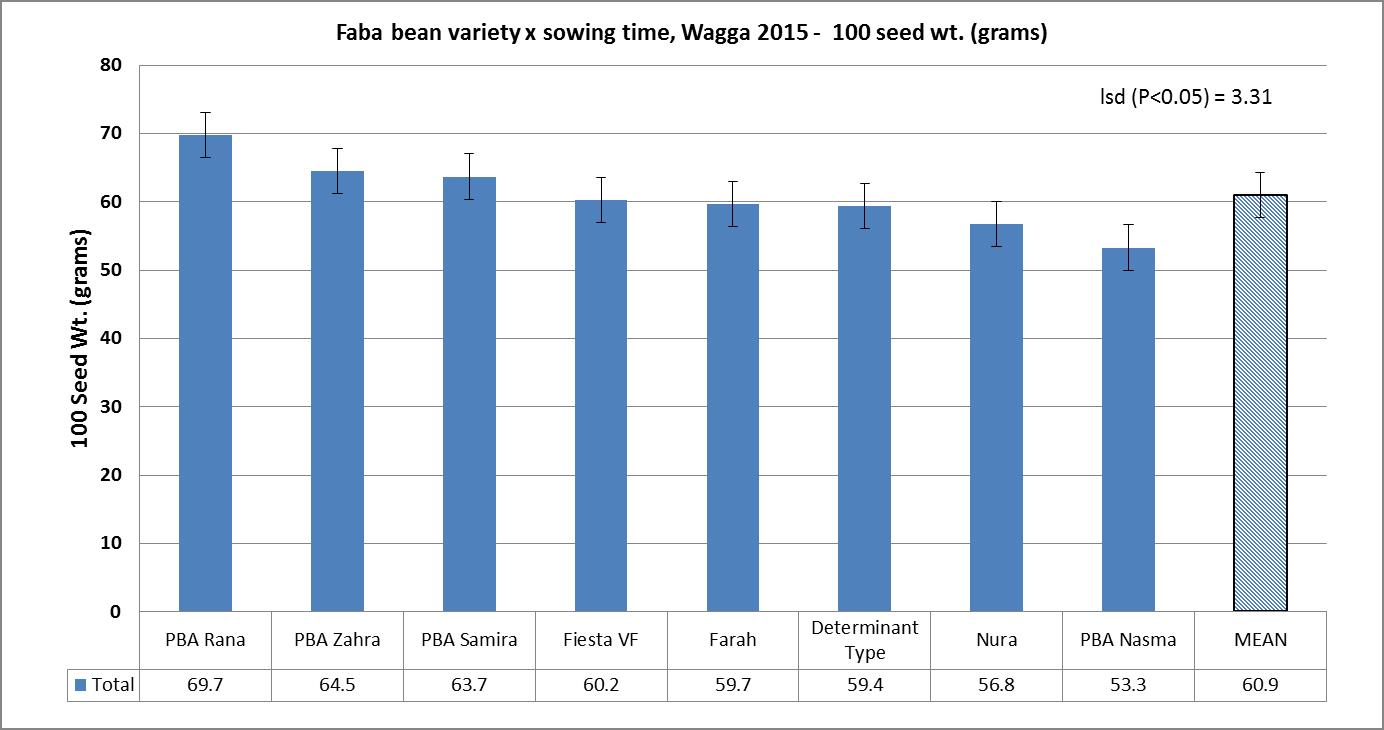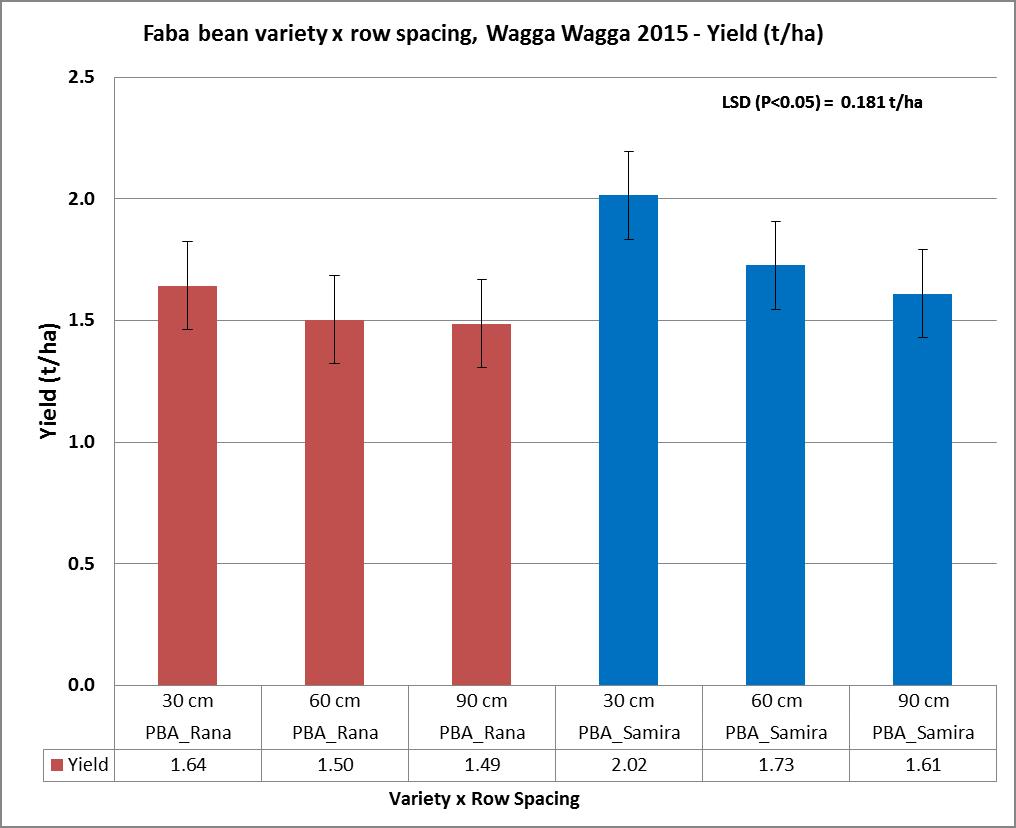Sowing time and variety selection for faba bean in southern NSW
Sowing time and variety selection for faba bean in southern NSW
Author: Mark Richards, Eric Armstrong, Luke Gaynor, Neroli Graham and Neil Coombes (NSW Department of Primary Industries, Wagga Wagga Agricultural Institute, Wagga Wagga) | Date: 16 Feb 2016
Background
Faba bean sowing time and variety trials have been conducted on acidic red-brown soils (pHCa 4.6-5.2) across southern NSW over the past three seasons (2013-15). Although these soil types are not ideal for faba bean growth and development excellent yields have been achieved, indicating wide-scale potential for cultivation across southern NSW. Yields of between 2-3t/ha have consistently been achieved, provided management guidelines have been followed.
However, it must be appreciated that most pulses (including their associated symbiotic rhizobia) are adapted to neutral to alkaline soils, reflecting their Mediterranean region of origin. Their growth and development (and survival of rhizobia) can be affected when soil pHCa drops below 5.0. Growers need to routinely monitor soil pH and maintain a base pH of approximately 5.0 by liming. Canola production has provided the financial incentive to lime, and these benefits have flowed on to pulse crops.
Given sound agronomy and early sowing, this research has shown faba bean to have the highest yield potential of all pulses tested (faba bean, field pea, lupin, chickpea and lentil) in southern NSW. This is even in dry seasons, warm and short springs, and with limited soil moisture. Drier springs have kept diseases in-check, minimised foliar fungicide use and improved seed quality and colour.
Results and discussion
Sowing time
Sowing time is the most critical management factor for faba bean production in southern NSW. Sow from April 20 to May 15 in this region, preferably aiming for the first half of this window, especially in western areas. This maximises yield in crops that produce 6-9t/ha dry matter (DM) with harvest indexes (HI per cent) of 30-35 per cent.
Crops have successfully been grown when sown up to a week earlier than April 20. However, this increases the risk of yield loss from both frost damage and disease due to increased biomass from favourable winter growing conditions. To the contrary, sowing later than the sowing window can expose the slower-maturing crop to moisture and heat stress at the end of the season. This results in shorter plants, lower height of bottom pods, harvest difficulties, reduced biomass, reduced number of flowering nodes, fewer pods and low yields.
Further sowing-time trials conducted at Wagga Wagga, Junee Reefs and Lockhart in 2015 supported previous work showing the importance of sowing within the recommended sowing window. A delay in sowing from May 1 until May 18 at Wagga Wagga resulted in a yield decline of 25 per cent; from April 16 until May 6 at Junee Reefs it resulted in a yield decline of 45 per cent; and from April 23 to May 13 at Lockhart it resulted in a yield decline of 26 per cent (Figure 1).

Figure 1: Grain yield of eight faba bean varieties over different sowing times at Wagga Wagga, Junee Reefs and Lockhart, 2015.
Choice of variety
Choice of variety is based on yield ranking (Figure 2), seed size, disease resistance and marketability. PBA Samira and PBA Zahra are recent releases and higher yielding than other current cultivars. Both have good resistance to Ascochyta and are less susceptible to chocolate spot and rust than Fiesta and Farah. The main difference between the two is seed size; PBA Samira has smaller seeds than PBA Zahra (60-65g/100 seeds compared with 65-75 /100 seeds). For practical reasons, PBA Samira is easier to sow because of its smaller seeds.
When sowing the large seeded PBA Rana, consider the suitability of the seeding equipment to effectively sow such a large seeded variety.
PBA Rana, PBA Zahra, PBA Samira and Farah all have good early vigour, and high biomass compared with other varieties. PBA Rana is lower yielding, most likely the result of its marginally longer growing season and later flowering compared with the other varieties, associated with the consistent run of short dry springs experienced during the course of these experiments.
PBA Nasma, which performed well in the south in 2015, is a northern variety not recommended for the south due to its susceptibility to both chocolate spot and aschochyta blight.

Figure 2: Long-term (2007-14) faba bean yields in the eastern portion of southern NSW cropping zone. Yields are presented as a percentage of the Site Mean Yield (%SMY).

Figure 3: Effect of faba bean variety on grain weight at Wagga Wagga, 2015.
Row spacing
Initial research in 2015 looking at the effect of row spacing on two varieties (PBA Rana and PBA Samira) showed a significant yield response by PBA Samira of 14 per cent at 30cm over 60cm row spacing (Figure 4). Interestingly, there was no significant yield response in PBA Rana to any of the row-spacing treatments. This is most likely due to the ability of the slower maturing PBA Rana to compensate for biomass and hence yield at wider row spacing. Further research is required to identify the yield response of other varieties at varied row spacing.

Figure 4: Grain yield of two faba bean varieties at three row spacings averaged over six populations at Wagga Wagga, 2015.
Seeding rate
A 2015 trial examining seeding density and time of sowing showed a significant increase in yield from increasing plant densities at the later sowing date of May 22 (Figure 5).
At the early sowing date (April 24), grain yield was unresponsive to increasing plant density, but when sowing was delayed to May 22, grain yield progressively increased as plant density increased.
Early sowing produces more biomass as the longer growing season enables plants to compensate for low plant density by producing more branches per plant/m2, whereas later sowing restricts plant biomass as the growing season is shorter. Increasing sowing densities with later sowing compensates for the reduction in branch numbers per plant /m2.
These results would indicate that density is not a critical yield factor with early sowing. However, a target establishment of 25-30 plants/m2 is recommended. However, to the contrary, if sowing later in the sowing window it becomes important to increase seeding rates to 30-40 plants/m2 to maximise yield potential in a season like 2015.
Sowing late and increasing plant density increased grain yield, but this still was insufficient to fully compensate for the reduction from late sowing.

Figure 5: Effect of faba bean seeding density and sowing time on yield at Wagga Wagga, 2015.
Conclusion
Faba bean research in southern NSW is providing evidence to continually update and establish improved agronomic guidelines and management practices for growers and advisors.
By following the guidelines developed with consideration to variety selection, paddock selection, time of sowing, weed control, disease management, harvest timing and strategic marketing, growers can profitably incorporate faba bean as another pulse option into their farming system.
Acknowledgement
Funding for this work was provided through the GRDC Project DAV00113 and UA00097, and their support gratefully acknowledged.
Contact details
Mark Richards
NSW Department of Primary Industries (DPI)
Wagga Wagga Agricultural Institute
Pine Gully Road, Wagga Wagga NSW 2650
02 6938 18831
mark.richards@dpi.nsw.gov.au
NSW DPI
Pine Gully Road, Wagga Wagga NSW 2650
02 6938 1814
eric.armstrong@dpi.nsw.gov.au
NSW DPIPine Gully Road, Wagga Wagga NSW 2650
02 6938 1657
luke.gaynor@dpi.nsw.gov.au
NSW DPI
Southern Pulse Agronomy
@NSWDPI_Agronomy
